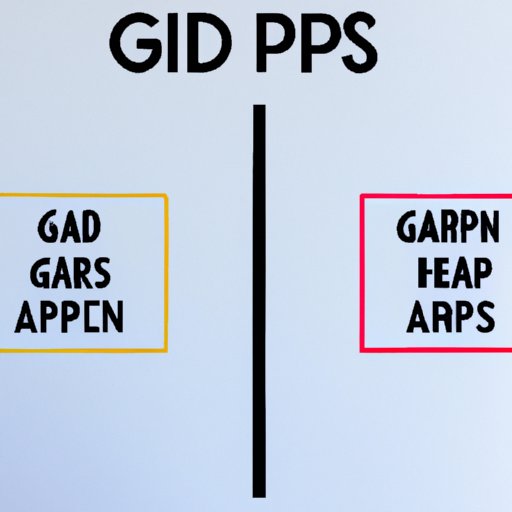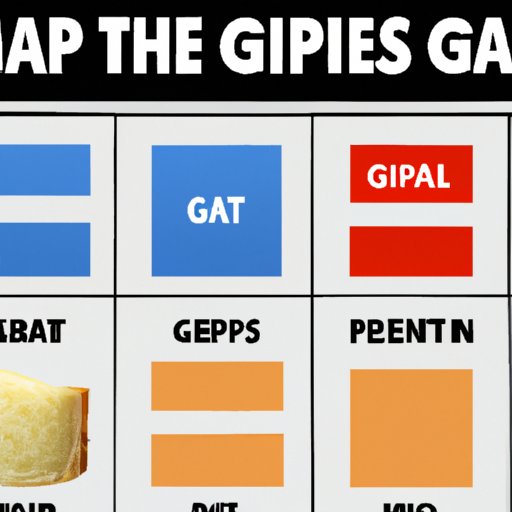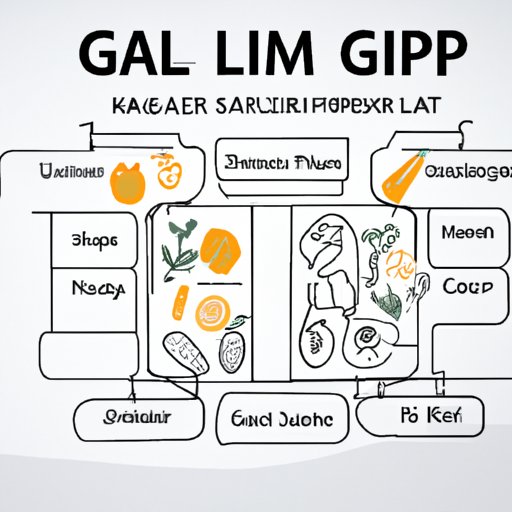Introduction
The Gut and Psychology Syndrome (GAPS) diet is a therapeutic nutritional protocol developed by Dr. Natasha Campbell-McBride, a medical doctor and nutritionist. The GAPS diet is based on the premise that imbalances in the gut microbiome can lead to a variety of physical and mental health conditions. By restoring balance to the gut, it is possible to improve overall health.
Overview of the GAPS Diet: What Is It and How Does It Work?
The GAPS diet is an evidence-based approach to managing digestive health, reducing inflammation, and improving overall wellbeing. It is based on the idea that imbalances in the gut microbiome can lead to a variety of physical and mental health issues. The GAPS diet works by eliminating certain trigger foods that can aggravate symptoms, while simultaneously introducing nutrient-dense foods to promote healing. The diet is divided into six stages, with each stage designed to gradually introduce more complex foods and reintroduce foods that had been eliminated earlier.
10 Reasons to Try the GAPS Diet for Better Health
The GAPS diet has been found to offer numerous health benefits. Here are 10 reasons to consider trying the GAPS diet:
Improved Digestive Health
The GAPS diet helps to restore balance to the gut microbiome, which can improve digestive health. This includes reducing symptoms of irritable bowel syndrome (IBS), Crohn’s disease, ulcerative colitis, and other digestive disorders.
Reduced Inflammation
The GAPS diet eliminates inflammatory foods that can contribute to systemic inflammation. This can help reduce pain, swelling, and other symptoms associated with chronic inflammation.
Balanced Moods and Emotions
The GAPS diet has been shown to support balanced moods and emotions. This is due to its ability to restore balance to the gut microbiome, which can improve the production of neurotransmitters that regulate mood.
Enhanced Brain Function
The GAPS diet can help to improve cognitive function. This is due to its ability to reduce inflammation, which can improve brain plasticity and protect against neurological decline.
Increased Energy Levels
The GAPS diet can help to boost energy levels. This is because it eliminates foods that can cause fatigue, while providing the body with essential nutrients necessary for optimal energy production.
Improved Immune System
The GAPS diet can help to strengthen the immune system. This is due to its ability to reduce inflammation and improve the absorption of essential vitamins and minerals, which are necessary for optimal immune function.
Weight Loss
The GAPS diet can support weight loss. This is due to its elimination of processed and refined foods, which can lead to unhealthy weight gain, as well as its emphasis on nutrient-dense whole foods, which can help to promote healthy weight management.
Better Skin Health
The GAPS diet can help to improve skin health. This is due to its ability to reduce inflammation, which can improve skin clarity and reduce breakouts.
Improved Nutrient Absorption
The GAPS diet can help to improve nutrient absorption. This is due to its inclusion of fermented and cultured foods, which contain beneficial bacteria that can help to break down food and absorb nutrients more efficiently.
Reduced Risk of Chronic Disease
The GAPS diet can help to reduce the risk of chronic disease. This is due to its ability to reduce inflammation, improve digestive health, and promote healthy weight management, all of which can reduce the risk of developing many chronic diseases.

Exploring the Pros and Cons of the GAPS Diet
The GAPS diet has many potential benefits, but there are also some drawbacks to consider. Here are the pros and cons of the GAPS diet:
Benefits of the GAPS Diet
- Improves digestive health
- Reduces inflammation
- Balances moods and emotions
- Enhances brain function
- Increases energy levels
- Improves immune system
- Supports weight loss
- Improves skin health
- Improves nutrient absorption
- Reduces risk of chronic disease
Drawbacks/Challenges of the GAPS Diet
- Eliminates many common foods
- Can be difficult to follow
- May be expensive
- Involves lifestyle changes

A Guide to the Essential Components of the GAPS Diet
In order to successfully implement the GAPS diet, it is important to understand the essential components. Here is a guide to the key elements of the GAPS diet:
Introduction to the Gut and Psychology Syndrome (GAPS)
The GAPS diet was developed by Dr. Natasha Campbell-McBride in response to her observations of patients suffering from digestive issues, mental health problems, and chronic illness. She discovered that imbalances in the gut microbiome could be linked to these issues. The goal of the GAPS diet is to restore balance to the gut microbiome, which can improve physical and mental health.
The Six Stages of the GAPS Diet
The GAPS diet consists of six stages. Each stage is designed to slowly introduce more complex foods, while eliminating foods that may aggravate symptoms. The six stages are as follows:
- Stage 1: Introduction Diet
- Stage 2: Full GAPS Diet
- Stage 3: Reintroduction of Complex Carbohydrates
- Stage 4: Reintroduction of Legumes and Whole Grains
- Stage 5: Reintroduction of Refined Carbohydrates and Sugars
- Stage 6: Maintenance
Foods to Eat and Avoid on the GAPS Diet
The GAPS diet eliminates many common trigger foods, such as grains, dairy, sugar, and processed foods. Instead, it emphasizes nutrient-dense whole foods, including vegetables, fruits, nuts, seeds, meat, fish, eggs, and fermented foods.

Meal Planning Tips for Successful GAPS Diet Implementation
Successfully implementing the GAPS diet requires careful meal planning. Here are some helpful tips for creating a successful GAPS meal plan:
Understanding Your Needs
Before creating a meal plan, it is important to assess your needs. Consider factors such as time constraints, budget, food allergies and intolerances, and preferences. This will help you create a meal plan that is tailored to your individual needs.
Creating a Meal Plan
Once you have assessed your needs, it is time to create a meal plan. Start by making a list of GAPS-friendly meals and snacks. Be sure to include a variety of foods to ensure you are getting all of the essential nutrients. Also, be sure to include some of your favorite GAPS-friendly foods to make the plan enjoyable.
Shopping for GAPS-Friendly Foods
Once you have created a meal plan, it is time to shop for GAPS-friendly foods. Look for nutrient-dense whole foods, such as fresh vegetables and fruits, grass-fed meats, and wild-caught fish. You may also want to stock up on GAPS-friendly snacks, such as nut butter, seeds, and dried fruit.
Finding Recipes
In order to make the GAPS diet easier to follow, it is helpful to find some delicious GAPS-friendly recipes. There are many GAPS-friendly cookbooks available, or you can search online for GAPS-friendly recipes. Be sure to choose recipes that are easy to make and involve ingredients that you enjoy.
Conclusion
The GAPS diet is an evidence-based approach to managing digestive health, reducing inflammation, and improving overall wellbeing. This article explored 10 benefits of the GAPS diet, pros and cons, and meal planning tips for successful implementation. If you are looking for an effective way to improve your health, the GAPS diet may be worth considering.
Key Takeaways
- The GAPS diet is an evidence-based approach to improving digestive health, reducing inflammation, and improving overall wellbeing.
- The GAPS diet has many potential benefits, including improved digestive health, reduced inflammation, balanced moods and emotions, enhanced brain function, increased energy levels, improved immune system, weight loss, better skin health, improved nutrient absorption, and reduced risk of chronic disease.
- The GAPS diet involves eliminating many common trigger foods, such as grains, dairy, sugar, and processed foods. It also involves introducing nutrient-dense whole foods, such as vegetables, fruits, nuts, seeds, meat, fish, eggs, and fermented foods.
- Successful implementation of the GAPS diet requires careful meal planning. This includes understanding your needs, creating a meal plan, shopping for GAPS-friendly foods, and finding recipes.
(Note: Is this article not meeting your expectations? Do you have knowledge or insights to share? Unlock new opportunities and expand your reach by joining our authors team. Click Registration to join us and share your expertise with our readers.)
